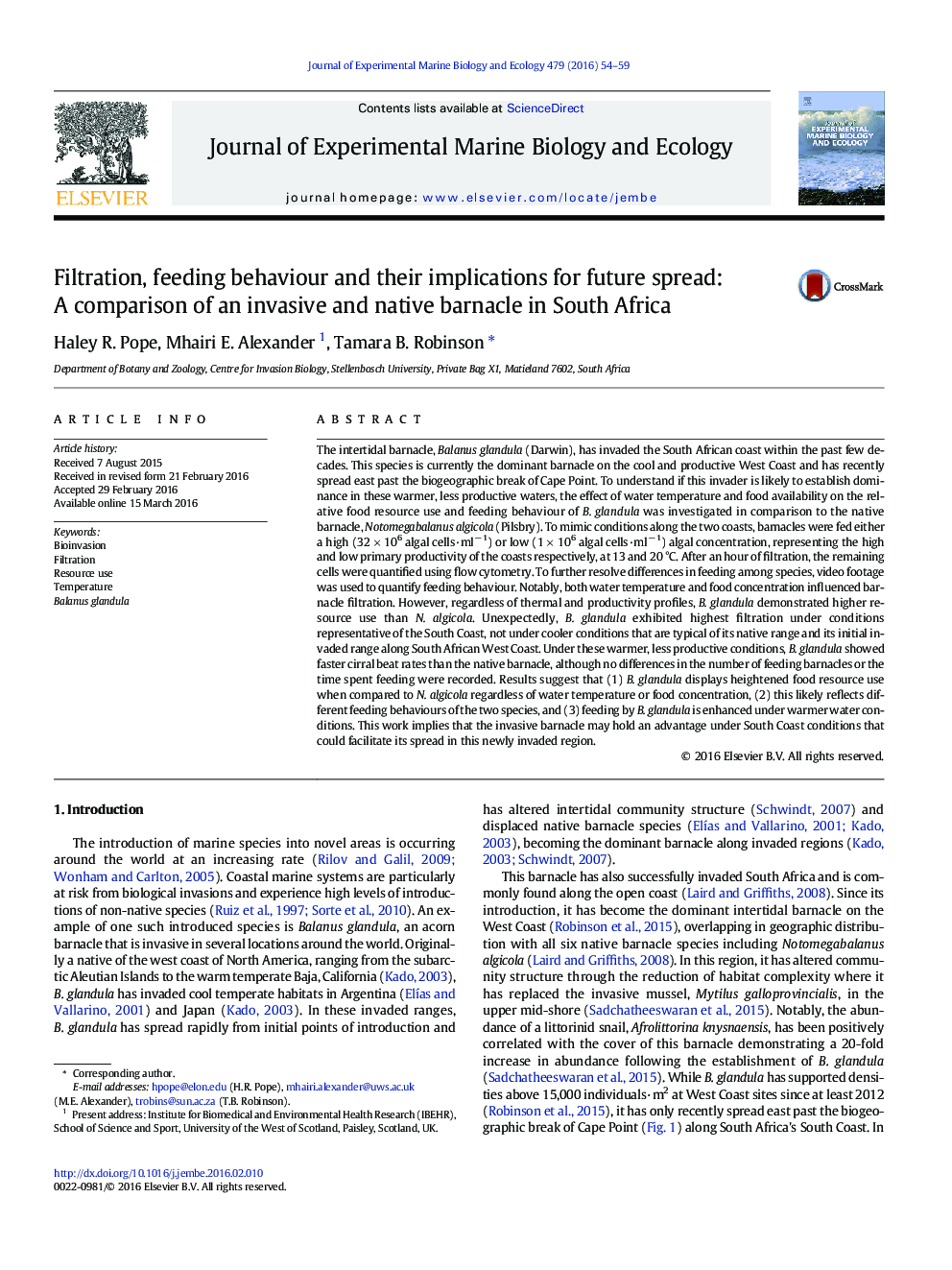| کد مقاله | کد نشریه | سال انتشار | مقاله انگلیسی | نسخه تمام متن |
|---|---|---|---|---|
| 4395263 | 1618396 | 2016 | 6 صفحه PDF | دانلود رایگان |
• We examine the effect of water temperature and food concentration on the food resource utilization of an invasive and alien barnacle.
• The invasive barnacle Balanus glandula displays heightened resource use over the native, likely reflecting different feeding behaviours.
• B. glandula’s feeding appears enhanced under warm low productivity conditions, suggesting an ability to spread along the South African coast.
The intertidal barnacle, Balanus glandula (Darwin), has invaded the South African coast within the past few decades. This species is currently the dominant barnacle on the cool and productive West Coast and has recently spread east past the biogeographic break of Cape Point. To understand if this invader is likely to establish dominance in these warmer, less productive waters, the effect of water temperature and food availability on the relative food resource use and feeding behaviour of B. glandula was investigated in comparison to the native barnacle, Notomegabalanus algicola (Pilsbry). To mimic conditions along the two coasts, barnacles were fed either a high (32 × 106 algal cells·ml− 1) or low (1 × 106 algal cells·ml− 1) algal concentration, representing the high and low primary productivity of the coasts respectively, at 13 and 20 °C. After an hour of filtration, the remaining cells were quantified using flow cytometry. To further resolve differences in feeding among species, video footage was used to quantify feeding behaviour. Notably, both water temperature and food concentration influenced barnacle filtration. However, regardless of thermal and productivity profiles, B. glandula demonstrated higher resource use than N. algicola. Unexpectedly, B. glandula exhibited highest filtration under conditions representative of the South Coast, not under cooler conditions that are typical of its native range and its initial invaded range along South African West Coast. Under these warmer, less productive conditions, B. glandula showed faster cirral beat rates than the native barnacle, although no differences in the number of feeding barnacles or the time spent feeding were recorded. Results suggest that (1) B. glandula displays heightened food resource use when compared to N. algicola regardless of water temperature or food concentration, (2) this likely reflects different feeding behaviours of the two species, and (3) feeding by B. glandula is enhanced under warmer water conditions. This work implies that the invasive barnacle may hold an advantage under South Coast conditions that could facilitate its spread in this newly invaded region.
Journal: Journal of Experimental Marine Biology and Ecology - Volume 479, June 2016, Pages 54–59
